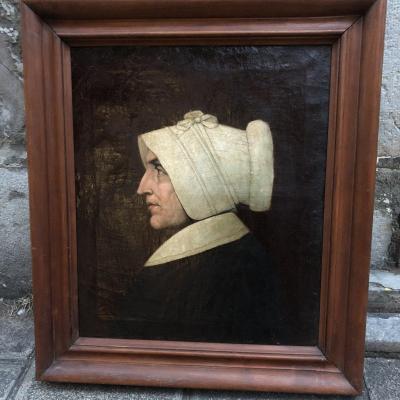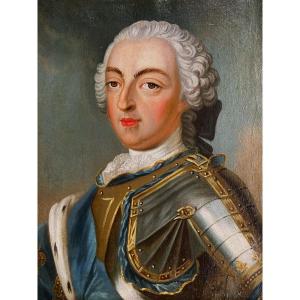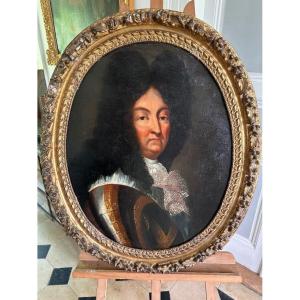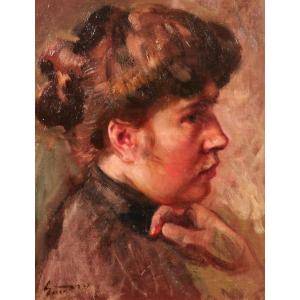A frontal light illuminates the face of the young lover of the Sun King, who poses three-quarters face, as dictated by the conventions of her time. At first glance, the viewer is struck by her grace and baby-like face. Without suffering from any affectation, our portrait is highly realistic, and the young princess with immaculate flesh is enhanced by the interplay of materials and colors. The green silk dress thus accentuates the purity of her flesh, and the pink of the muslin stole adds a touch of softness. Comparing our painting with the few known representations of Mademoiselle de Fontanges, everything indicates that we possessed a rare portrait of the duchess: the facial features, the clarity of the eyes, and the disheveled hair with undone ribbons, the result of the hunting accident we discuss later.
Despite her tragic fate, the Duchess was elevated to a true icon in her time. This, apart from the fact that she was a short-lived favorite of the king, because a trivial accident gave birth to a new hair fashion.
Dimensions: 40 x 32 cm – 53.5 x 45.5 cm with the frame
Barely 18 years old, Marie Angélique de Scorraille de Roussille, Duchess of Fontanges (1661 - 1681), was the favorite of Louis XIV while he was 40 years old. One day while she was accompanying him on a hunting trip, her ribboned hair got caught in the branches. The king found her undone hairstyle "charming". And the very next day, all the ladies of the court adopted this new hairstyle which would bear the name of its involuntary inventor: the Fontanges hairstyle.
Biography: François de Troy (Toulouse, January 9, 1645 – Paris, May 1, 1730) was born into a family of glaziers and embroiderers. We know nothing of his childhood in Toulouse. He may have learned to paint from his father, Antoine, who also practiced portraiture. His move to Paris between 1662 and 1668 allowed him to train with Claude Lefebvre and Nicolas-Pierre Loir, who gradually introduced him to the court. Approved by the Royal Academy in 1669, he was officially received there in 1674 as a history painter. However, it was the portrait genre that brought him fame and to which he dedicated himself fully from 1675. Building on his success, François de Troy rose in the hierarchy of the Academy, becoming a professor in 1693, then director in 1708 and finally assistant rector in 1722. André Bouys, Hubert Drouais and his own son, Jean-François de Troy, received his teachings there. Having lived through the reigns of Louis XIV and Louis XV, François de Troy remains one of the most famous portrait painters of the French Baroque, alongside Nicolas de Largillière and Hyacinthe Rigaud.
Bibliography:
- AUBERT, Jean, Faces of the Grand Siècle: French portraiture under the reign of Louis XIV, 1660-1715, (exhibited cat., Nantes, Museum of Fine Arts, June 20 - September 15, 1997; Toulouse, Museum of Augustins, October 8, 1997 - January 5, 1998), Somogy, 1997.
- BREME, Dominique, François de Troy, 1645-1730, (exhibited cat., Toulouse, Paul Dupuy Museum, April 7 - July 7, 1997), Paris, Somogy, 1997.
- KIRCHNER, Thomas, Joys and Misfortunes of Portraiture in 17th-Century France, Paris, Fondation maison des sciences de l'homme German Center for Art History, 2022.
- BREME Dominique, JAMES-SARAZIN Ariane, Portraits in Majesty François de Troy, Nicolas de Largillière, Hyacinthe Rigaud (catalog of the exhibition in Perpignan, Hyacinthe Rigaud Art Museum, June 26 – Nov. 7, 2021). Silvana Editorial, 2021.




















 Le Magazine de PROANTIC
Le Magazine de PROANTIC TRÉSORS Magazine
TRÉSORS Magazine Rivista Artiquariato
Rivista Artiquariato
